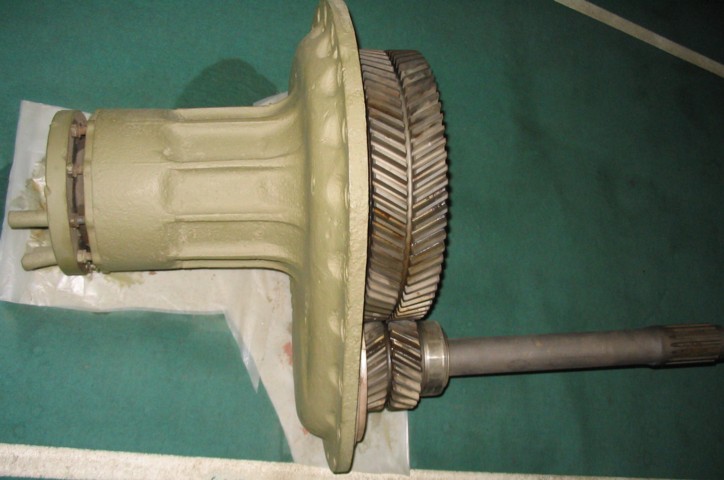Some of the companies that built equipment using M-4 stuff used the differential, transmission, and running gear, but may have used them on a sub chassis of their own design, with a different engine. Most of the components are pretty much bolt on, so it could be done fairly easy. For all of its tactical faults, the M-4 differential is very well built,and using a herringbone gear design in their final drives. Something the Germans didnt use until the TigerII (not that it helped them much)
We had another larger-scale UXO defusion going on in our area. This time it has been a British 1,000kg (should be 2,200 lbs) air mine.
6,500 people had to be temporarily evacuated. Here are some photos:

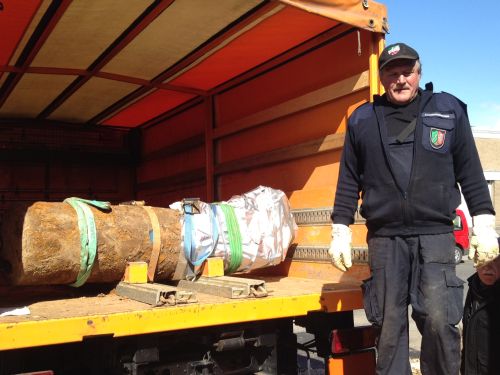
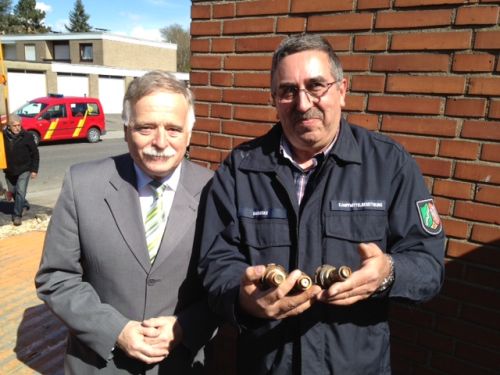
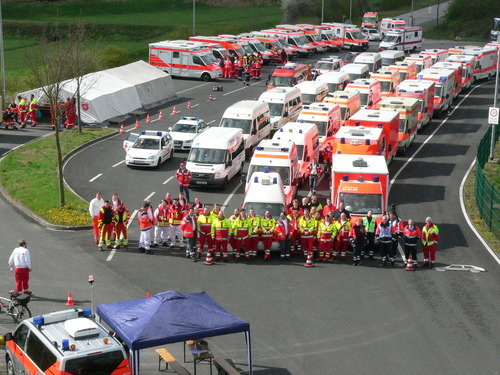
photos: G. Jansen, S. Kreutz, H. Horrig, H. Schiffer
for www.aachener-zeitung.de
The town of Jülich was pretty much annihilated in November 1944. From Wiki:
On 16 November 1944, 97% of Jülich was destroyed during Allied bombing, since it was considered one of the main obstacles to the occupation of the Rhineland, although the city fortifications, the bridge head and the citadel had long fallen into disuse. The ruined city was subject to heavy fighting for several months until the Allies eventually managed to cross the Rur on 23 February 1945. Newsreel footage exists of Supreme Commander Eisenhower at the southern entrance to the citadel.
The Emergency Services are taking no risks.
It must be a little unnerving at times knowing that there’s the risk of UXO being found in places people have and do frequent.
1000kg of explosives going off would have been pretty bad. That’s about the size of the larger conventional (as in non-“bunker buster” type) bombs today…
Incredible: a Curtiss P40 just refound after 70 years, in the deep desert of Egypt, by an exploration team of an oil company. Untouched!!! Like it was abandoned some months ago… Please, I kindly ask to the members of the forum (especially the Canadians ones, owing the P40 to a Canadian squadron) to keep us informed about the aircraft history and, above all, the history and the destiny of his pilot.
Quite amazing.Looks like kinda sort of miracle for me. Especially if to keep in mind it lied on earth surface so long time undiscovered.Very odd for the country who waged the long war just few dacades back.
Amazing!
Thanks for the info!
Amazing indeed!
Important news on this discovery: the aircraft owned to the 260th RAF squadron. The pilot was the flight sergeant Dennis Copping from Essex. Unfortunatly he was listed MIA on june 28th 1942. Probably he still lyes not far from the aircraft. Unfortunatly not a good end story. A British mission is leaving for caring the aircraft and possibly the pilot bringing them back home.
Have a look here: http://www.qattara.it/60-173%20Kittyhawk.htm
This is an incredible story…thank you for the update.
An Heinkel He 219 has been found and raised off of the Danish coast.
http://www.danas-have.dk/He219.htm
Update:
World War II Kittyhawk fighter found in Sahara, shedding light on pilot’s fate
Jakub Perka
The discovery of the Curtiss P-40 Kittyhawk in the Sahara Desert was described by one military historian as “the aviation equivalent of Tutankhamun’s Tomb.”
By Michele Neubert, NBC News, and Ian Johnston, msnbc.comA remarkably well-preserved fighter plane that crashed in the Sahara Desert during World War II has been found 70 years later, shedding new light on the pilot’s struggle to survive.
The American-made Curtiss P-40 Kittyhawk was discovered by a Polish oil worker, Jakub Perka, who was exploring the desert in Egypt, The Telegraph newspaper reported. It was about 200 miles from the nearest town.
It is believed that the pilot, Dennis Copping, 24, ran into trouble while flying in 1942 but still managed to land the plane on the sands, the paper said.
Military historian Andy Saunders said that the British flight sergeant “must have survived the crash” because a photograph of the plane showed a parachute had been put up on the side of the plane, apparently as a form of shelter, The Telegraph reported.
“The radio and batteries were out of the plane, and it looks like he tried to get it working. If he died at the side of the plane, his remains would have been found,” Saunders added. “Once he had crashed there, nobody was going to come and get him. It is more likely he tried to walk out of the desert but ended up walking to his death. It is too hideous to contemplate.”
He said the discovery was “the aviation equivalent of Tutankhamun’s tomb.”
Air enthusiasts excited
The Vintage Wings of Canada website speculated that the plane had a mechanical problem, ran out of fuel or that the pilot simply got lost.The website said there seemed to be a growing consensus that the plane’s serial number was ET 574, based on what could be made out from photographs. If this is confirmed, the website said it was possible that Canadian flying ace James “Stocky” Edwards had previously flown the fighter.
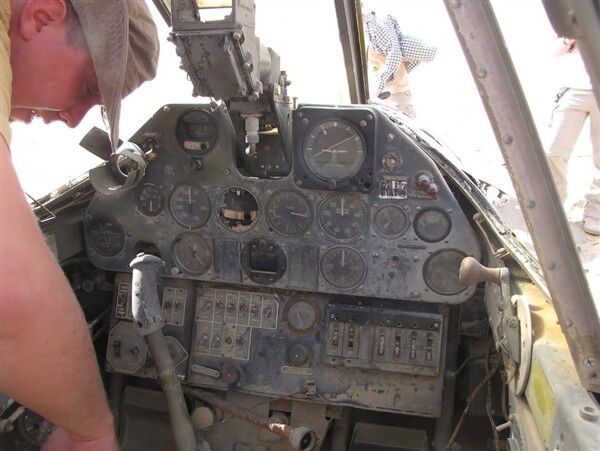

“Air enthusiasts excited
The Vintage Wings of Canada website speculated that the plane had a mechanical problem, ran out of fuel or that the pilot simply got lost.”
Everything is possible, and the post-mission report compiled by his wing comrade (have a look to Quattara.it) refers a probable lost route. Aniway in a photo posted on the web and reposted and commented here in this forum, at least two bullet holes are clearly visible. Probably he lost the right way due to some AA damage.
The remains of Coppins probably found. The British military attaché was immediately alerted. Now it is right that this brave airman who served his country has the burial he deserves… Read here:
Hello to all, I don’t know if you are informed, but in Burma, one has just recovered 120 Spitfire MKXIV. They were buried in their case of origin with the fat paper and were greased, under an asphalted road. It is ever the biggest discovery of Spitfire known.
Friendly Fred
Hi Fred. Incredible! Never heard about it! Can you post any links or photos?
This is really something! Imagine, after all this time finding something like that. Sorta like those P-38’s they found under the ice several years ago. At least they put them where they could be found, though they probably weren’t thinking about that back then either.
I remember my Dad (who was a Seabee) telling me about all the tons of equipment they threw into the ocean at the end of the war. Brand new bulldozers, trucks, jeeps, you name it, all dumped over the side.
Hello to all, to answer you this topic, has a link that will permit you of in to know more.
Friendly Fred
http://blog.avionslegendaires.net/2012/05/insolite-plus-de-120-spitfires-pourraient-refaire-surface-apres-67-ans-sous-terre/
Sorry, but it is in French.
I hope that we will be able to see some pictures of the recovery. It would be great to see the whole thing unfold.

